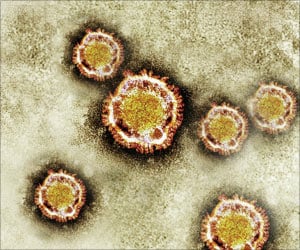Anxiously eyeing the approach of winter, US health officials are urgently gearing up for a huge vaccine campaign hoping Americans will swing behind efforts to protect them from swine flu.
Anxiously eyeing the approach of winter, US health officials are urgently gearing up for a huge vaccine campaign hoping Americans will swing behind efforts to protect them from swine flu.
"Ultimately, the number of people that we hope will be vaccinated before the fall winter wave of H1N1 arrives will exceed any of the previous vaccine campaigns that we've conducted in this country," Michael Osterholm, director of the Center for Infectious Disease Research and Policy at the University of Minnesota, told AFP."This is the largest vaccine effort the world has ever seen," agreed Robin Robinson, director of the Biomedical Advanced Research Development Authority (BARDA), quoted in the Washington Post.
But authorities also have to overcome a vocal debate in the United States about vaccinations, amid lingering suspicions among some parents that they are not safe for young children.
"At this point it is just really unclear to say how many will get vaccinated," said Osterholm.
"It's all going to be a matter of when the vaccine is available. If the vaccine is available, and people are getting sick in the winter, then I think you are going to see many more people wanting the vaccine."
The United States is now the country the worst hit by the swine flu pandemic which spread across the border from the disease's epicenter in neighboring Mexico earlier this year.
Advertisement
Some 263 people have so far died across the country, and more than 40,000 cases have been registered, although US health officials have said they believe as many as a million people could already be infected.
But an all-out effort has been launched to put in place a vaccine before the start of the traditional flu season in the coming months.
Health officials have called for thousands of volunteers to join clinical tests of two vaccines with the aim of having results in two months time, enabling the vaccination campaign to start at the beginning of the fall.
"We are hopeful we'll be talking about several hundred million people getting vaccinated if possible," said Osterholm.
"It's going to literally be a function of how much vaccine we'll ultimately have before the wave really takes hold in this country."
An emergency meeting of health officials has been set for Wednesday, July 29, to work on an action plan and identify the groups most at risk.
"Everything is going to be done to try to encourage people to get it," said Gretchen Michael, a BARDA spokeswoman, referring to the vaccine.
"As you know the virus is still circulating. It's been circulating all summer. We anticipate based on what we see in the southern hemisphere that... especially when children go back to school, it will continue to circulate at a similar kind of rate."
But no-one here has quite forgotten the 1976 vaccination fiasco.
After an outbreak of a swine flu virus on a military base, officials feared the nation was on the verge of another epidemic similar to the 1918 wave of deadly Spanish flu. So 40 million Americans were hastily vaccinated.
But the virus never spread, and instead 500,000 people developed a rare inflammation of the nervous system known as Guillain-Barre Syndrome, which led to 25 deaths.
"People are working day and night on this," said William Schaffner, infectious diseases teacher at Vanderbilt University, talking on National Public Radio.
"Some of these things just take time, and remember we don't want to cut corners, we want to do it right so that, when we deliver this vaccine to the American public we can say it meets our standards."
The clinical trials are mainly aimed at calibrating the doses to give to patients, not to test if it is safe or not, officials stressed.
"We are not trying to find some yet unrecognized problem with the vaccine," said Osterholm.
Source-AFP
SRM











